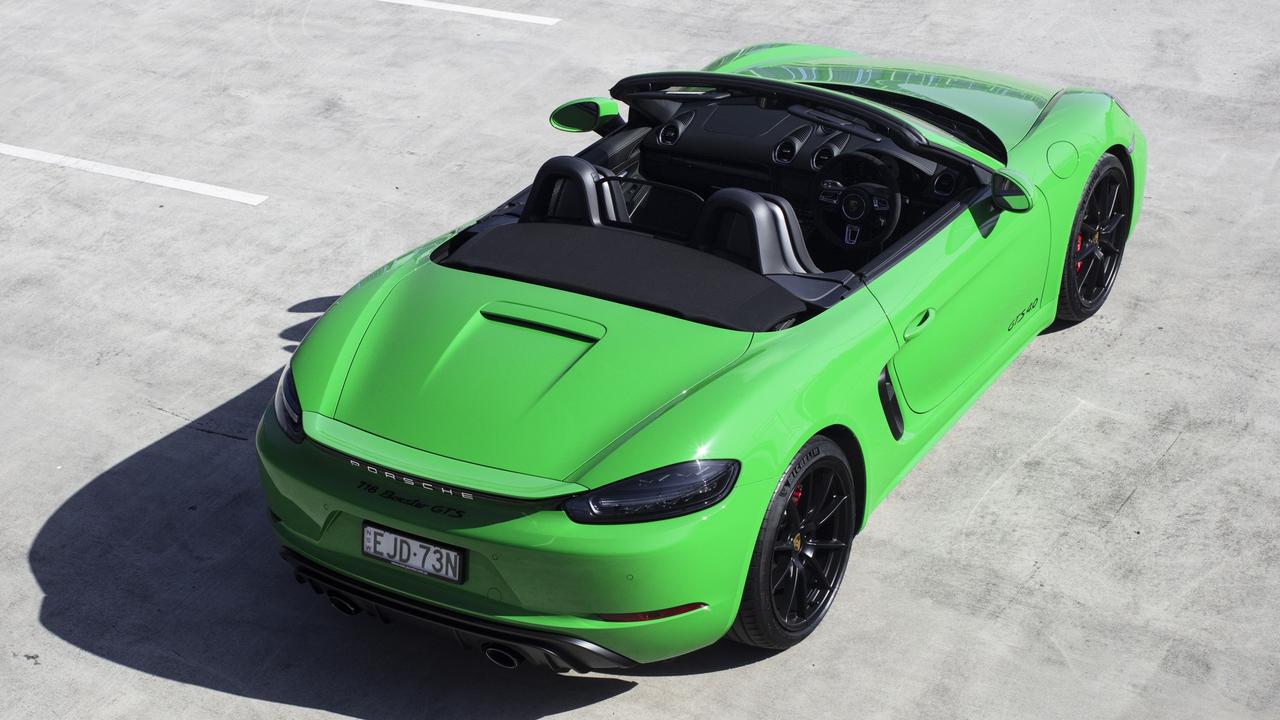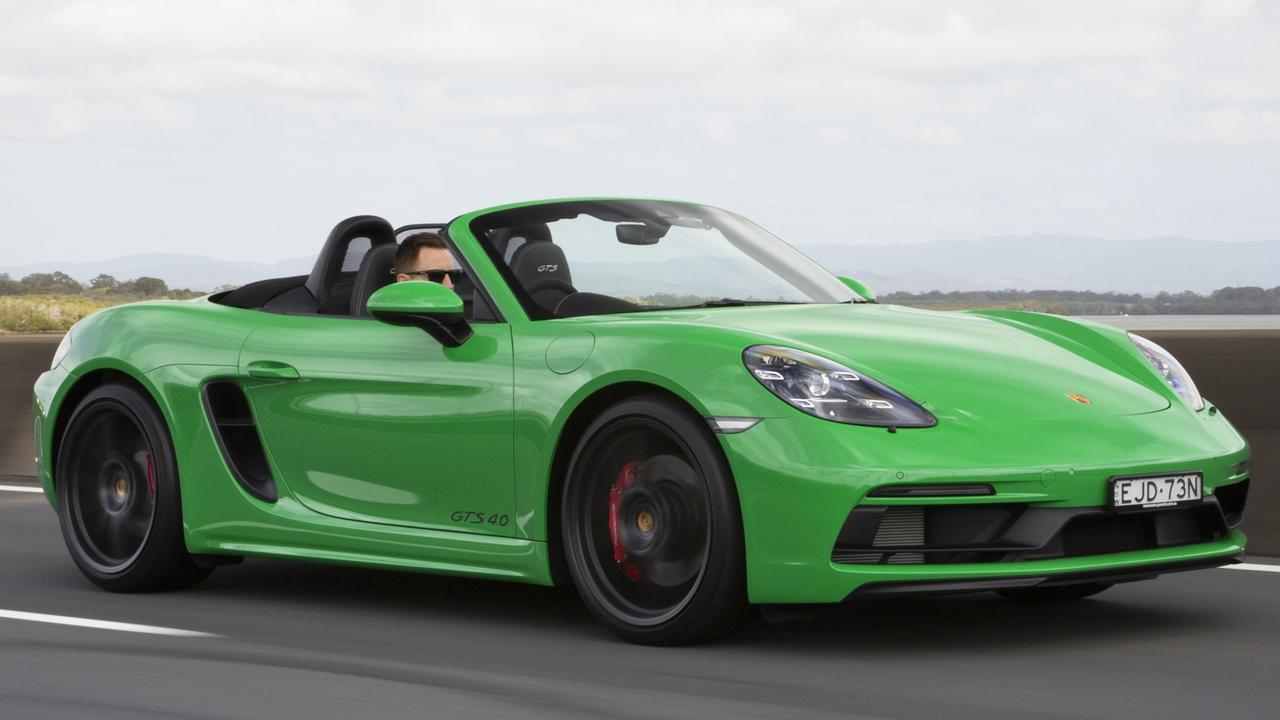Porsche Boxster GTS review: Six-cylinder engine brings back former glory
This car maker has reversed a highly controversial decision that has brought this sports car back to its former glory.
Porsche makes some of the best sports cars in the world, but its latest weapon might just be its best one yet.
Here are five things you need to know about the Porsche Boxster GTS.

PORSCHE LISTENS TO CUSTOMERS
This car is the direct result of customer feedback. Having built the Boxster with a free-revving, naturally-aspirated flat six from its 1996 debut, Porsche controversially introduced turbocharged four-cylinder engines for the “718” in 2016. Faster than its predecessor, the flat-four model was roundly criticised for a soundtrack similar to Subaru’s WRX.
So Porsche worked to bring back the six for the Cayman Coupe and Boxster convertible’s midlife update. Available in the high-spec GTS 4.0 and range-topping Boxster Spyder or Cayman GT4, the new motor is evidence of Porsche’s respect for its customers.

IT’S NOT ABOUT THE SPEED
Many cars are faster than the 718 Boxster GTS 4.0 — possibly even its four-cylinder predecessor when paired with a dual-clutch “PDK” automatic transmission. But this car isn’t about speed.
Instead, the GTS is crafted to make you feel good. The engine rumbles, wails and howls like a classic Porsche, the manual transmission’s shift is near-perfect (though the gearing is too high) and the surprisingly compliant suspension encourages you to take longer and longer drives.
The sound really is core to the experience — that big motor responds rapidly to every touch of the throttle, hungrily gulping air through an intake mounted just behind the driver.
Suede-like material on the firm steering wheel adds to the tactile pleasure of piloting the Porsche, where every control input delivers perfect response to driver input.
It’s an immensely satisfying car to drive.

YOU DON’T NEED A 911 (BUT IT’S OK TO WANT ONE)
The Boxster’s F1-like mid-engine structure delivers superior dynamic balance to the iconic 911’s rear-mounted layout. It also looks better to our eyes, with compact dimensions made possible by its two-seat cabin, rather than the 911 convertible’s slightly awkward four-seat silhouette.
You can’t get a manual 911 at the moment, which could — and should – be a deal-breaker to traditionalists, as there’s nothing like rowing your own gears in a proper sports car.

NOT CHEAP
The catch is that the GTS treatment doesn’t come cheap. Priced from $174,800 plus on-road costs (about $190,000 drive-away), the GTS costs about $59,000 more than a basic Boxster, though it undercuts the 911 Cabriolet by a handy $84,000 or so. You get a lot of equipment for the cash, including sports suspension, a limited-slip differential, big brakes and sports seats not found in cheaper models. Niceties such as dual-zone climate control, electric seat adjustment and a touchscreen infotainment system with satnav and smartphone mirroring are also pleasant. As is ever the case, Porsche’s press demonstrator was packed with about $25,000 in optional extras including almost $5000 for vivid “Python Green” paint.

THERE ARE OTHER OPTIONS
Got $200,000 to spend on a convertible? Lucky you.
The Boxster GTS is the only free-breathing manual model for this money, though we’d also consider a Lotus Exige roadster if you want to trade Porsche’s luxury for an even more focused driving experience. The bombastic Mercedes-AMG C63 S is also worth a look, as twin-turbo V8 power won’t be part of its package for much longer. But our money would go with the Boxster — it’s everything you could want from a sports car.



